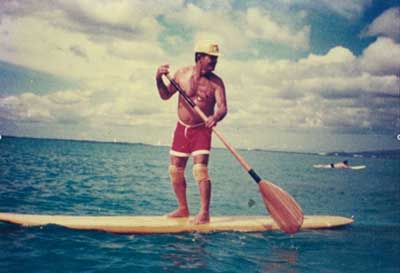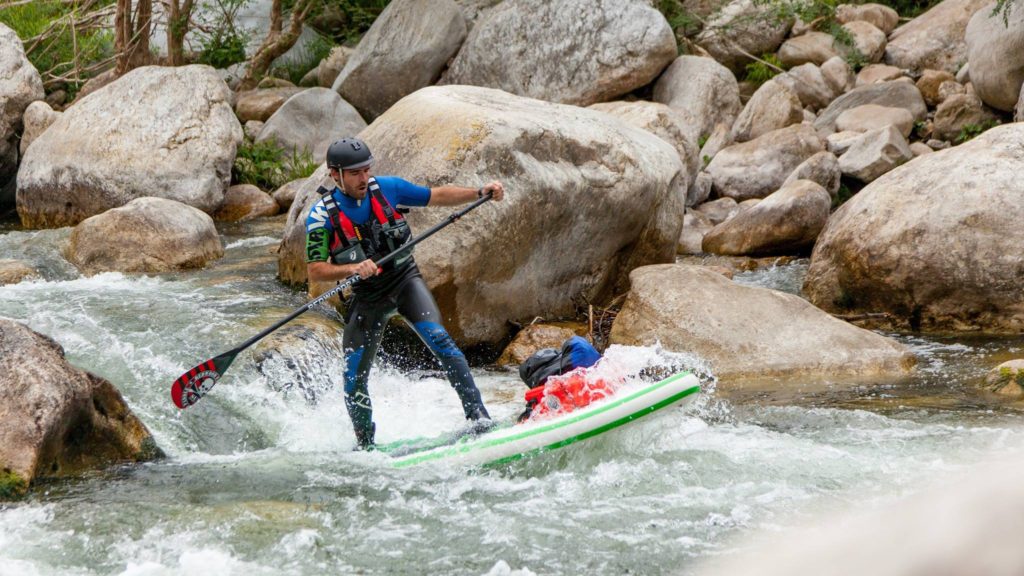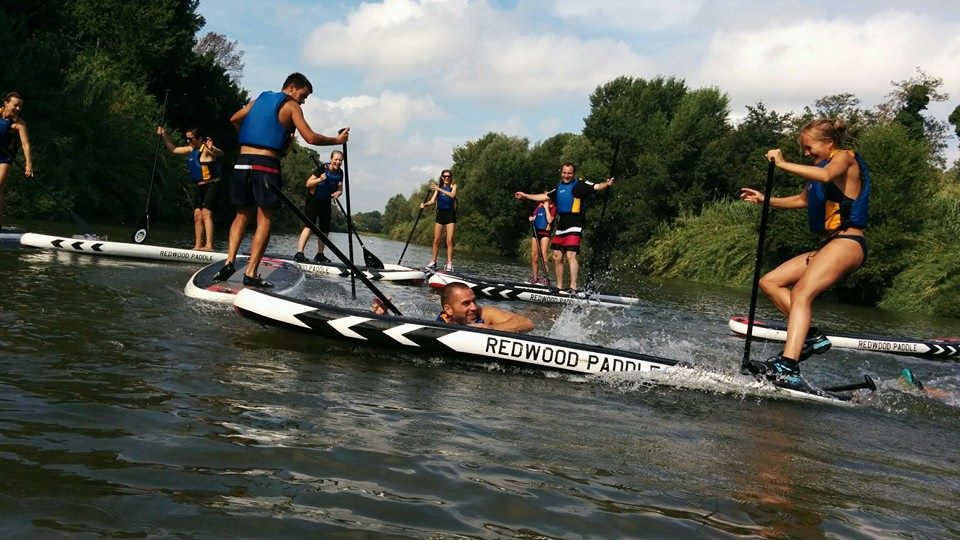Paddle board
Stand up Paddling (SUP or simply Paddling) born in Hawaï in the 1960s was a little known sport until recently. Today, it is one of the fastest growing water sports. Originally, SUP entailed surfing waves while standing on a big board and using a paddle to propel oneself. It has rapidly grown in popularity thanks to its accessibility and wide range of possible settings. Whether surfing monster waves or just paddling across smooth water, Stand up Paddling is possible in a fantastically wide range of settings, and what’s more, it’s good for the health. It constitutes a full body workout which stimulates both surface and core muscles (strength, balance, cardio…).

Why a River?
At first glance, it can seem strange to ride down a river on an oversized surf board. However, in the past few years increasing numbers of “surfers” have begun testing their skills in rivers and streams. This is in part thanks to improvements in board construction techniques (today inflatable and semi-rigid Stand up Paddling boards are highly resistant and hydrodynamic) as well as growing awareness that rivers offer a wide range of conditions and challenges.

Small draught
Indeed, SUP is in many ways ideally suited to going down river: a very shallow draft (made possible by retractable and removable fins) allows riders to venture where canoes and kayaks cannot go

Smooth Ride
It is so quiet and smooth on the water that fish and other wildlife barely register your presence

Standing position
A “standing” position is often more comfortable and offers a better vantage on your surroundings. In calm waters it is much more fun and exciting than kayaking

Fun
Accessible, stand up paddle permit to have fun very quickly.
However, in the past few years increasing numbers of “surfers” have begun testing their skills in rivers and streams.
The region’s rivers are filled with clean and refreshing water and offer a more protected setting for watersports than the often windswept coast. Weather in the Mediterranean can change quickly and the wind often makes Paddling on the sea laborious or even impossible. Finally, rivers offer riders more varied scenery and, in particular, a much wilder natural setting than the coastal beaches.

The Tech River
The Tech, France’s most southerly river, begins its journey at 2,345 meters above sea levels in the heart of the Pyrenees before flowing 84 kilometers to the north beach of Argelès sur Mer where it meets the Mediterranean sea in the Mas Larrieu nature preserve. Its transparent waters flow through the Catalan back-country, where its banks remain wild and preserved. Its entire length is set aside as a Natura 2000 European heritage site and is home to countless bird, turtle, fish and plant species. Given that water levels remain low in summertime, Stand up Paddling is the best -or only- way to explore this little known area of our region.
The Mas Larrieu Nature Preserve
The Mas Larrieu nature preserve extends over 145 ha on both sides of the Tech river as it runs through the towns of Elne and Argelès-sur-Mer. The nature preserve includes not only the mouth of the river but the surrounding beach and forests as well. The area is home to an impressive number of species, which are best observed from the unique vantage of a Stand up Paddle. The calm waters of the “Bocal du Tech” are sure to enchant all nature lovers.
Natura 2000
The Natura 2000 classification is awarded to natural or semi-natural areas in the European Union which present great value to a region’s heritage through their unique flora and fauna. The Tech river is classified as a Priority Conservation Zone along the quasi-entirety of its length from its source to its mouth.
The Têt River
After dropping down the steep side of the Massif du Carlit, the Têt river grows gentler as it cuts through Perpignan before flowing into the sea at the Canet en Rousillon beach. The mouth of this river is one of the best places to try Stand up Paddling.




